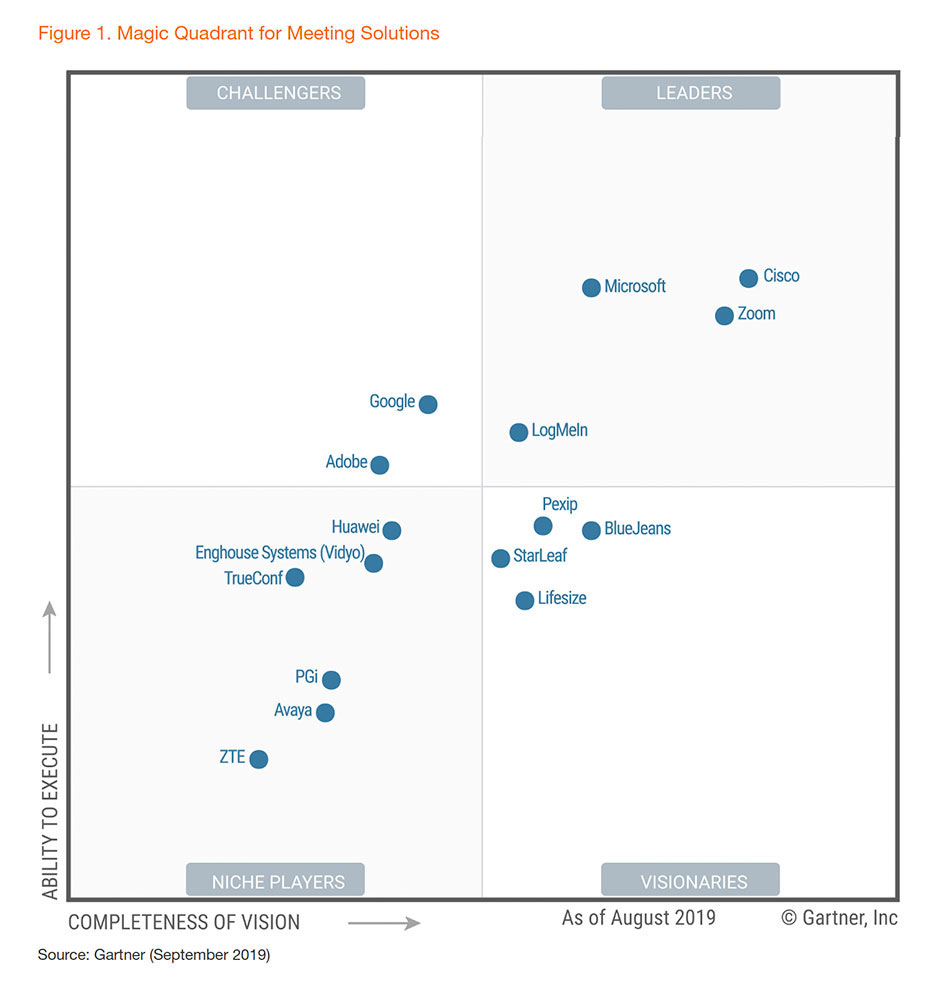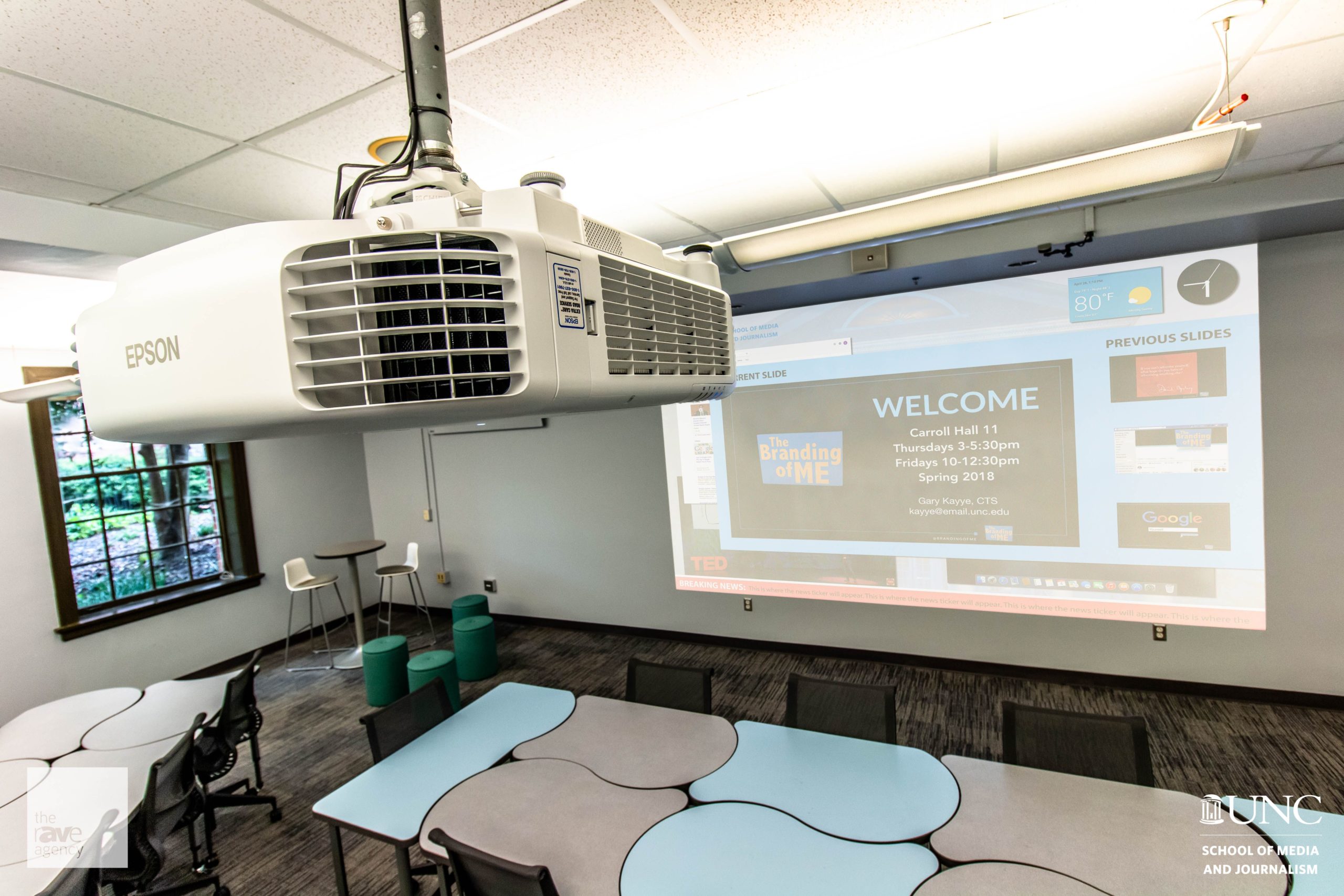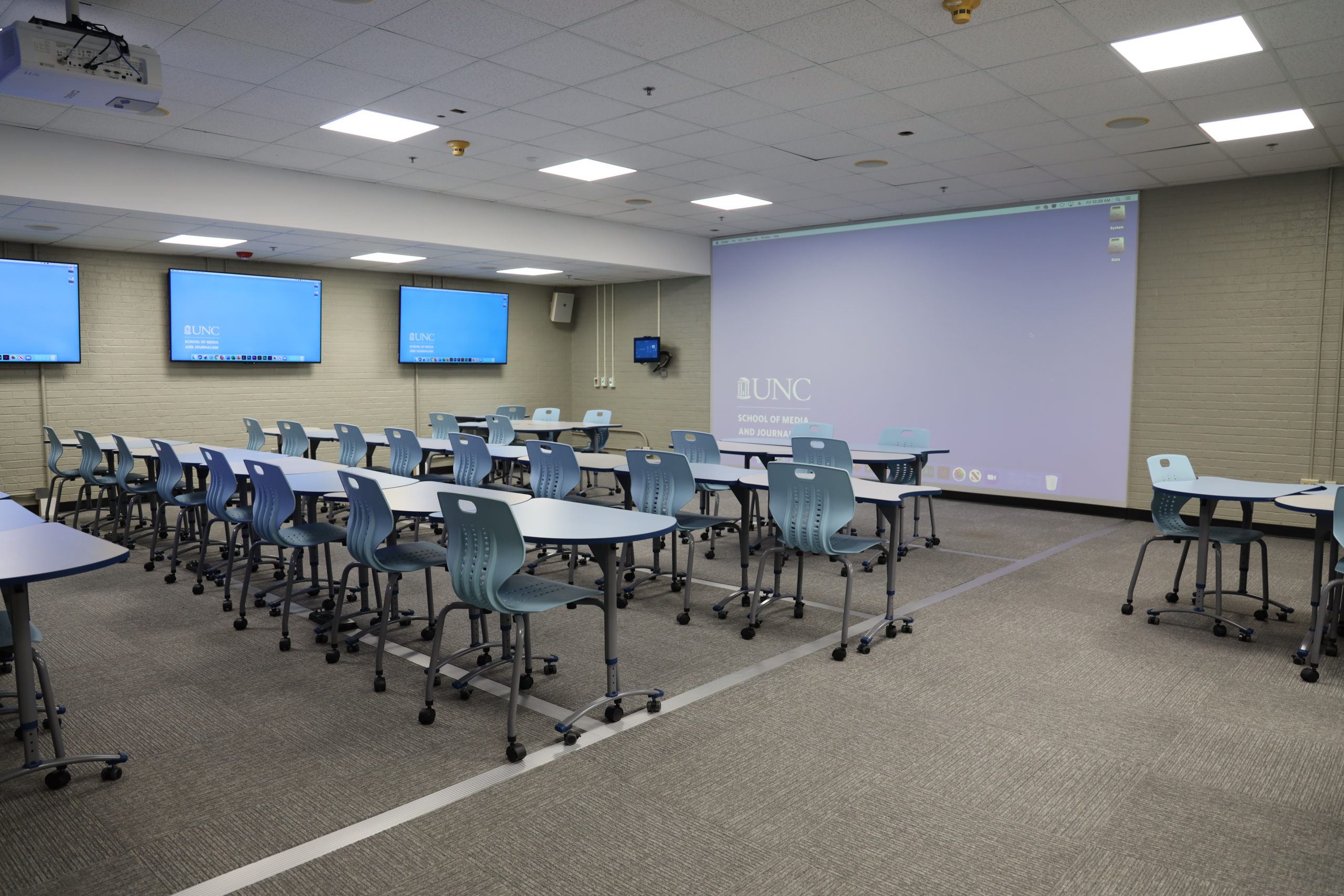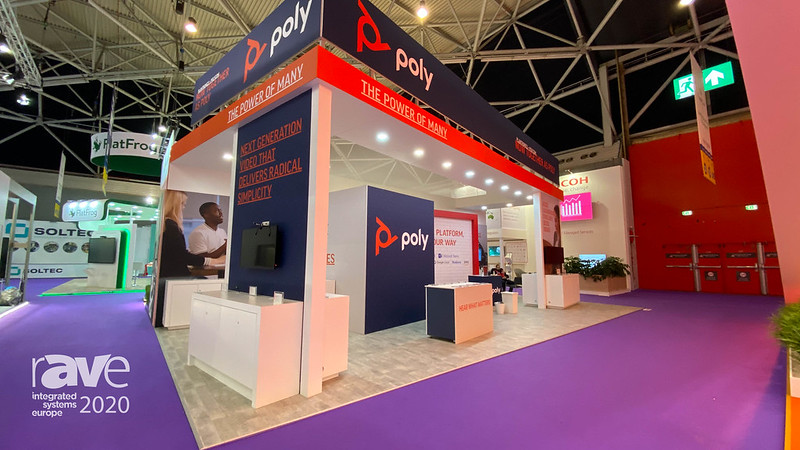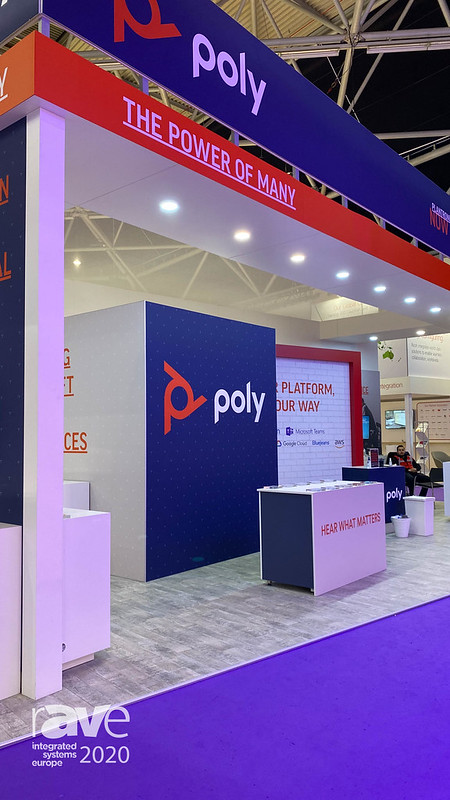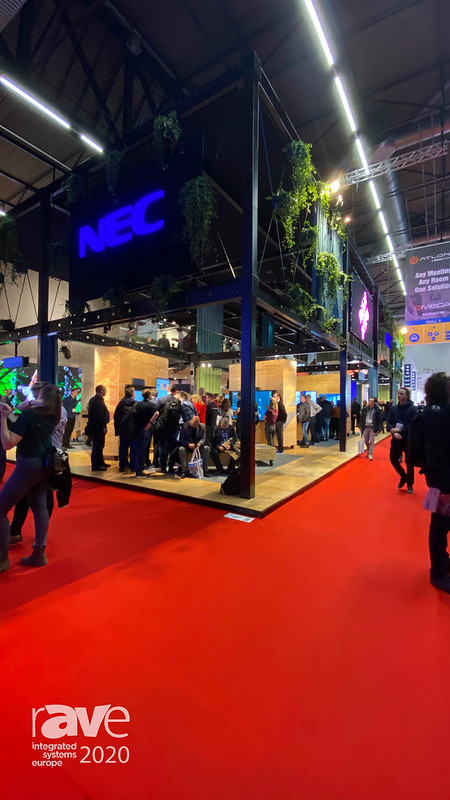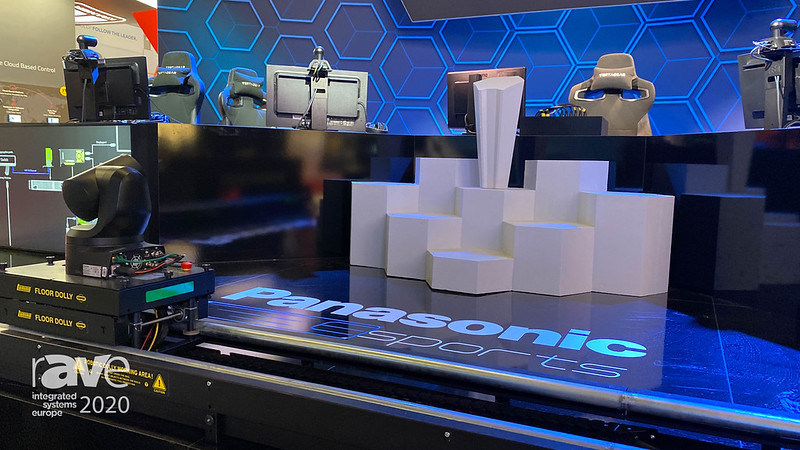The 20th Annual Kayye’s Krystal Ball: 2020 Edition

Welcome to my 20th Kayye’s Krystal Ball! I know, I was shocked too. Twenty years of this. But I love writing this annual predictions article. If you’re a regular reader, you already know this, but for those who don’t, my Kayye’s Krystal Ball piece is an annual article where I not only tell you what I think is going to happen in the AV market for the upcoming year but, I also look back and review the previous year’s predictions — sort of a scorecard of accuracy, if you will. 2020 is going to be an exciting year with A LOT of changes in the AV market so I hope you’ll read them all, below.
Author’s note: Kayye’s 2020 Krystal Ball Predictions was actually delivered as an Almo Pro A/V exclusive webinar last week. So, if you prefer to listen/watch instead of read, go here — it includes a slide deck along with a recording of Gary’s live delivery of the webinar.
First, let’s review my 2019 predictions and see how well I did:
AV-over-IP will be THE THING that everyone talks about all year long: Yep, I got this one right! At the beginning of the year, we had eight companies shipping AV-over-IP solutions and by the end of 2019, we had at least 40. There’s a plethora of ways to do it — some good, some bad. But, no standard, yet — see my 2020 predictions, below, as I address this and make a prediction about standards in AV-over-IP too. But the big, big news for 2019 in AV-over-IP was that the last of the big three (i.e., Crestron, AMX and Extron), Extron, finally entered the market with its AV-over-IP solution called NAV. But it didn’t do it the same way AMX (aka: SVSi) or Crestron did — both of those companies both only have 1G solutions. Extron went 1G and 10G — and everything in-between as its 10G solution can be dialed-down to anything from 1G to 10G so, if you have the IT department’s permission to only use 8G of the network, you can, 7G, yep. Even 2.5 or 3.7G.
 Using Apple’s 1984 strategy, Zoom will rule videoconferencing: Nailed this one. Zoom and Cisco — imagine that, yes, Zoom and Cisco are neck-and-neck in the videoconferencing market — now called video collaboration or UCC (unified communications and collaboration) in case you’re a perfectionist with the latest buzzwords. This matters. Not only was Zoom founded by a former Cisco WedEx’er (the biggest competition to Zoom) but, Zoom’s only been around one-third the amount of time that Cisco’s been in the videoconferencing space — oh, and by the way, Cisco basically invented videoconferencing too. According to the latest Magic Quadrant from Gartner, Zoom has leapfrogged Microsoft, Google and BlueJeans and is virtually tied with Cisco in leadership and innovation. Zoom is doing exactly what Apple did in the 1980s. For example, for universities, to encourage campus-wide adoption, Zoom is giving away licenses to all the students as long as the university pays for licenses for each professor. In the case of UNC, where I teach, that means we pay for approximately 3,800 licenses while our 20,000+ students all get free Zoom accounts for the four years they attend UNC!
Using Apple’s 1984 strategy, Zoom will rule videoconferencing: Nailed this one. Zoom and Cisco — imagine that, yes, Zoom and Cisco are neck-and-neck in the videoconferencing market — now called video collaboration or UCC (unified communications and collaboration) in case you’re a perfectionist with the latest buzzwords. This matters. Not only was Zoom founded by a former Cisco WedEx’er (the biggest competition to Zoom) but, Zoom’s only been around one-third the amount of time that Cisco’s been in the videoconferencing space — oh, and by the way, Cisco basically invented videoconferencing too. According to the latest Magic Quadrant from Gartner, Zoom has leapfrogged Microsoft, Google and BlueJeans and is virtually tied with Cisco in leadership and innovation. Zoom is doing exactly what Apple did in the 1980s. For example, for universities, to encourage campus-wide adoption, Zoom is giving away licenses to all the students as long as the university pays for licenses for each professor. In the case of UNC, where I teach, that means we pay for approximately 3,800 licenses while our 20,000+ students all get free Zoom accounts for the four years they attend UNC!
There are too many wireless collaboration boards: Yes, way too many. Everyone agrees with this one. But, by the end of 2020, there will only be four dominant leaders in the collaboration board space — read my 2020 predictions below to see which four companies those are. Keep reading as the hardware isn’t as big of a deal as the UI (user interface).
BYOD and collaboration will move from boxes to systems and ecosystems in 2019: Some did, some didn’t. Companies like Extron and Vivitek moved towards wireless sharing ecosystems — Extron with its ShareLink and Vivitek with its NovoConnect — but Barco is still pushing the converting wired to wireless and, now with the ClickShare Conference, switching Zoom Rooms to BYOM (bring your own meeting). The ClickShare Conference is cool, and will likely do very well, by the way. But, what Vivitek is doing building wireless NovoConnect receivers and two-way touch into their monitors and projectors is pretty genius.
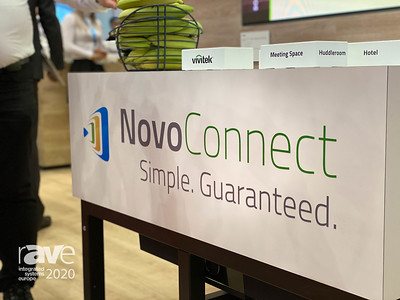
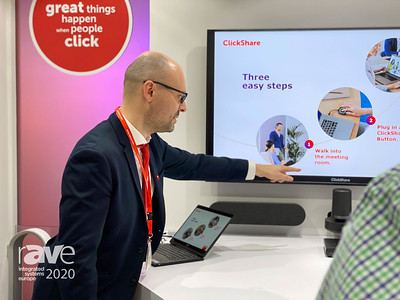
Consumer products are steering the ProAV market: Nowhere is this more obvious than when customers are asking, “Can we control that with Alexa?” I hear this over and over and over again from AV integrators. And, the answer is and should be, mostly, no. These devices just aren’t secure yet. It’s a giant risk that you, as the AV company, could burden if there is a breach. But it’s all over the place. Did you forget how many customers want Apple TVs in their meeting rooms, too? It’s not going away. We’ve over-complicated the functionality of Alexa by reinventing it with custom-AV-only (Alexa knockoffs) versions that are, well, terrible. So, eventually, we’ll need to address this and Apple’s recent announcement that they will be focusing on the “enterprise” space more in 2020, is a start. No word from Jeff Bezos or Amazon though.
I predicted we’d see gesture-based control of AV systems: No one is doing this better than Oblong — it’s “flicking” content feature is totally natural and logic to the user. If you haven’t seen it, check them out. And read this. I sure wish more companies would copy this or simplify their products using gestures.
Universities will replace 100 percent of their projectors by 2020: If they haven’t already, most universities are specifying that they replace all their lamp-based products with laser-based ones on the next upgrade cycle. Nearly no university is buying lamp-based projection.
Digital canvassing is the killer app of AV-over-IP: Here is where I think nearly every AV-over-IP company is completely clueless. Here’s why: every, not most, but every customer/user I show my digital canvas-based classroom to at UNC or who I explain the idea of digital canvasing to all, universally, want it. Not some, but all.
But, with HDMI-based systems, this is super-expensive as you’d have to basically route every input into a video wall processor to give you the ability to put any content anywhere. But, in the AV-over-IP world, once the content is on the network, it’s just a matter of picking it off and placing it where it needs to go. That includes tiling and layering content, too. Yet, all the big-three in AV-over-IP talk about (in 2019, that big-three was AMX, Crestron and SDVoE but by the end of 2020, you’ll need to add Extron into that) is replacing the way you route signals now via HDMI to a networked-based one. Although some people care about expediting that, mostly that’s an IT issue, not an AV issue. The real killer-app of AV-over-IP is turning video into content and then sending it anywhere we want it to go — that includes tilting it or layering it on one giant screen (or the digital canvas).
Digital signage will double in 2019: I missed this but, a 64% growth is pretty darn good! You can thank LG, NEC, Epson (LightScene) and Samsung!
Ambient LEDs will debut: The best of the best is the LG LED film — I LOVE that. But, even lighting companies have gotten into it — look at the Martin Lighting stuff. LED lighting has moved from live events into corporate offices! I nailed this one!
Cloud-based AV will bring us the AVaaS potential: This is ALMOST there! I see the horizon and there is no question we’ll see this in 2020. Keep reading. But, 2019 saw a lot of AVaaS offerings from both manufacturers and distributors, alike. But, the content cloud is THE THING. So, I will call this a tie.
Finally, I also predicted Star Wars 9 would outsell every movie in 2019 — but dang that Avengers: End Game movie! Ugh!
So, let’s move on to my 2020 predictions.
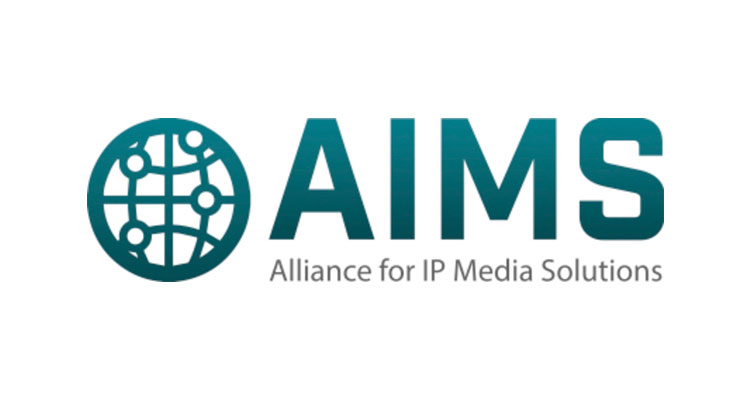 An AV-over-IP standard will rise: An alliance called AIMS (Alliance for IP Media Solutions) will likely publish an actual AV-over-IP standard for the ProAV market based on the SMPTE 2110 standard (yes, I am shortening it, get over it, picky broadcast industry player) for AV-over-IP in the broadcast market. In broadcast, they need 40G, 50G and even, sometimes, 100G networks to drive content — with either barely any or no compression). That same standard, according to AIMS, can be used to drive a 1G, 5G and 10G standard way of sending ProAV signals across a network (known as AV-over-IP). Obviously, it’s not ready and isn’t anything but words until it’s published but, they say they plan to publish it as an open standard that, if everyone follows it, all AV products will be interoperable on an IT network.
An AV-over-IP standard will rise: An alliance called AIMS (Alliance for IP Media Solutions) will likely publish an actual AV-over-IP standard for the ProAV market based on the SMPTE 2110 standard (yes, I am shortening it, get over it, picky broadcast industry player) for AV-over-IP in the broadcast market. In broadcast, they need 40G, 50G and even, sometimes, 100G networks to drive content — with either barely any or no compression). That same standard, according to AIMS, can be used to drive a 1G, 5G and 10G standard way of sending ProAV signals across a network (known as AV-over-IP). Obviously, it’s not ready and isn’t anything but words until it’s published but, they say they plan to publish it as an open standard that, if everyone follows it, all AV products will be interoperable on an IT network.
However, even with all this, we will NOT end 2020 adopting the SMPTE 2110 standard for AV-over-IP. No way. It’s just one of the platforms for the technology and companies like Crestron, AMX, Extron and the SDVoE Alliance of manufacturers will still dominate the AV-over-IP product portfolios at the end of the year.
USB-C will emerge as the connector of choice for everything AV for video: The USB-C connector first appeared on, of all things, Apple laptops. In fact, Apple was part of the development of USB-C and helped invent the connector that is its moniker. Ironic, huh, when you think they still don’t use it on its iPhones even though nearly everyone using one wants Apple to. Anyway, back to USB-C. USB-C is fast — like way fast. It can carry video bandwidths up to 20 Gbps. So, it can handle everything we do in the ProAV and HomeAV markets AND, some USB-C specs allow for 3 amps (20 volts at 60 watts). So, in addition to it carrying video, audio, control, ethernet and content, it can handle power too — the ultimate in PoE (power-over-ethernet). Thus, it will become the standard connector of AV in 2020. That means you’ll see USB-C ClickShare buttons, USB-C switchers, routers, wall-plates, transmitters, receivers, audio devices and even power ports. This should be a fairly quick ramp-up — likely less than three years.
Image mapping will move inside: The requirement for screens to be hung all over the place to project on is a 2015-like mentality. Nowadays, you can use walls, floors, ceilings, the sides of building and even non-white surfaces to project on. And, we should be. We should NOT be limited by the screen size nor should we be limited by a rectangle or square. Absolutely, you should use screens if you’re seeking perfect colorimetry but, if you just want to project something somewhere, while still being able to use that projection surface as whatever it’s supposed to be, laser-projection is perfect for this! And, in 2020 you’ll see a lot of this. A lot. The success that companies like Epson has had with the LightScene and NEC has had with projection in digital signage, coupled with the ever-decreasing price of projection, will drive a “projection-everywhere” movement in 2020. And, you should take advantage of this too! Use projection for inside image mapping for events but also consider it for ambient lighting, color-setting a room, as secondary display technology (no screen required) and for wayfinding or pathway setting. The cool thing now is that you can drive projectors with something as simple as a media player or, in some cases, send the content wirelessly via a network. And, of course, there’s that digital canvassing idea I mentioned in last year’s Krystal Ball article.
And, nowhere is this more evident that ARTECHOUSE in NYC. This is one of the most immersive projection experiences, ever – this is all Barco:
Speaking of digital canvassing — could it start to replace the projection screen?: Have you ever considered how much real-estate in a room you are losing by limiting your projection surface to replacing the existing projector and buying a new one that “fits” the same throw distance to project on to the existing screen? And, have you considered moving up to 4K? In addition to a higher resolution image, have you considered that you can actually pull people sitting in a room closer to the screen? Yes, you can. As 4K is four-times the pixel density of 1080p, your audience (i.e., the front row) can sit closer to the projected image and still not see the “dots” from the DLP mirrors or LCD imagers. Remember, the current model for seating in a room is based on image height, yes, but, more importantly, it was based on, “how close can people sit to the screen without seeing the pixels?” When that model was created, our maximum resolution was 1080 or, at best, 1920×1200. So, when you go 4K, you get four-times the pixel density, thus, you can move the front row closer to the screen, without causing viewer fatigue.
So, instead of using the current AVIXA CTS standards for room designs, which were based on projection a resolution no higher than 1080p, pull people closer to the screen and open the room up more. And, consider projection on the entire wall. Here’s how that would look:
That’s one of my classrooms at UNC (dubbed Room 58) — the University of North Carolina. In fact, that room is in the basement fo a 70-year-old building. And, it has brick on three of four walls. So, we added a drywalled surface on one wall using Goo Systems Paint — but Sherwin Williams has screen paint now, too — and we project floor to ceiling. Certainly, it’s not designed for 12-foot high PowerPoint images (even though some professors do that and love it). It’s designed for my concept of the digital canvas — project the PowerPoint slides the size you would have but then we can tile or layer the screen with anything else we want to — YouTube, a website, social media feeds — anything. Voilà — digital canvassing!
Here comes the AV content cloud: So far, the AV industry’s use of the “cloud” has only been via cloud-based control systems (well, barely), simple collaboration and digital signage. But, I predict that in 2020 we will see applications for what I am calling the AV content cloud. What the heck is it? Well, if you understand how a digital signage network works, then this will be a simple concept to grasp; if not, maybe not so easy. In a digital signage network, there are three ways to send content to a screen: stream it in real-time; send it to a media player (mostly overnight) and have the media player play the content when scheduled; or use a traditional HDMI switching network. Although almost no one does this anymore, many airports still route via HDMI as it’s still the most reliable way to route signals. But, most signage content isn’t “mission-critical” or lifesaving information so they’ve quickly leveraged the network to deliver content.
Imagine if every projector and monitor had a thin-client player — much like the Sony Bravia, Samsung SmartTV and LG WebOS monitors do. Now imagine using it like a digital signage network would use it. So, let’s take a look at how this could play out in a university classroom or corporate training facility. If everything projector or monitor had a thin-client player, you could, as a teacher, send your presentation to the display as a file — it would be stored on the player and retrieved and played when you got to the room — no laptop connection or PC in the room required. Alternatively, that same teacher could use the player inside the display to find the file — wherever it is saved on the network — and “play” it in the classroom. This is AV content distribution.
The key to this working is the need for a simple (and consistent) UX across all devices. And, remember, there’d be a need not just for content distribution but also for room control, too. An AV content cloud isn’t any good if you can’t also control turning things on/off and manage the environment, too. But, the various AV control companies are in a really good position to make this happen as the UX is THE THING that will make this work well. And, they’re all starting to offer cloud-based control too.
So, who should you keep your eye on for the AV content cloud? I’m going to recommend three companies here: Utelogy, Extron and Crestron.
Zoom will enter a new market: Remember before Zoom and Teams? Remember how hard and unreliable videoconferencing was? Now, it seems so long ago yet, it was only a few years ago when Cisco’s booth at InfoComm and ISE was filled with hardware-based videoconferencing systems. Remember Spark?
Zoom was the impetus for all this changing. Cisco and BlueJeans can all yell that they helped too but, they weren’t first and they weren’t the catalyst for change in the small- and medium-sized meeting rooms’ use of video. And, Zoom didn’t just change videoconferencing, it actually simplified the hardware in the room — the very best example of that is its partnership with Logitech and the Tap. Genius.
Imagine if Zoom did that to another AV market application. What if they brought “simple” and “happy” concept outside the meeting room and worked to simplify more of the AV process. Well, 2020 will see that.
We’ll see seamless interoperability between Zoom, Cisco and Microsoft Teams by the end of 2020: You read that right. By the end of 2020, you will be able to join a Teams meeting from Zoom, join a Zoom call using Cisco’s WebEx and even share and collaborate on content between each platform. Cisco will be the last to come to the party but, it will get there. You’ll see seamless integration between Zoom and Microsoft Teams bypass the end of April!
Who to watch for when this happens? Poly — yes, Poly. In the immortal words of Larry David, “They have a pretty, pretty, pretty…” good plan!
The high-end residential AV market is on the verge of collapsing: The folks that run the CEDIA Expo may not understand what’s been happening with their show but, the rest of us do. Crestron’s decision to bail out of CEDIA Expo some four or five years ago seems logical looking back on it now. Look at what’s happened since. The likes of Apple HomeKit, Alexa and Google Home have decimated much of the custom residential space. But, they’ve brought global awareness to the potential of the smart home, too.
So, I’m predicting as much as a 20-30% decline in the high-end residential AV market in 2020. It’s downward spiral started in mid-2018 and has continued at a rapid pace since. But, 2020 will be bigger. The sophistication of Amazon’s Alexa and Apple’s continually improving HomeKit will ensure that.
Who is the bellwether for HomeAV to watch? The Z-Wave Alliance! Their alliance has the potential to “save” the high-end segment of AV.
The display market will consolidate, again: In the past few years, we’ve seen the collapse of InFocus, the resurgence of Sharp and the dominant positions that three major display players have carved out — NEC, Epson and LG. But, this market is ripe for acquisitions and consolidation. Samsung used to be THE display company from Korea and now they’re playing catch-up to LG. Epson has proven that the projector is far from dead and NEC is one of only two display companies in the world that makes every kind of display technology. Every single one. Vivitek is still rising — especially in Europe — in the U.S., not so much. Sony has the most potential but seems to be a bit lost on what it’s leading with — is it Bravia or the $1 Million+ CrystalLED? Both are amazing technologies but seem to be niche. BenQ is always saying to the market, “hey, we’re over here,” and Optoma can’t decide if it’s a projector company or an LED company.
As for the high-end projector companies, Barco is tops right now. And, thanks to ClickShare, the company’s brand equity is super-high. It’s pushing into the LED market quickly — thanks to its investment in LED-manufacturer Unilumin and this will be an interesting battle as LED market leaders Leyard and Absen have good brands too. Speaking of Leyard, wow! It has been the LED pioneer for 10+ years running now! Every time I want to see the latest innovation in LED technology, I turn to Leyard. It is, by far, on the leading-edge of everything. It is my bellwether. So, for example, when it announces a MicroLED, you know it’s primetime. Until then, it’s a marvel that’s like one of the eight ‘AV wonders of the world’ — but, it’s too expensive.
So, the company to watch for 2020 in display tech? I have two here. Existing leader: NEC. Up-and-coming: Vivitek.
NEC, Avocor, Newline and Sharp will dominate the collaboration board market in 2020: There I said it. Those four companies will easily be better than 50% of all of it. Don’t count out DTEN — with a Zoom-only ecosystem — and SMART has marked 2020 as the year it takes back the market that it arguably created some 25+ years ago. SMART will have an amazing 2020, for sure. Although they’re new to the market, DTEN has some aggressively priced pre-integrated Zoom Room collaboration boards that will easily sell thousands simply because of its partnership with Zoom. Although, NEC’s InfinityBoard is, right now, the perfect collaboration board. But if you’re a Teams user and waiting for the ultimate Windows Collaboration Display (WCD), Sharp is your one-and-only option (it stands alone as the only WCD-certified panel) and Newline going to use 2020 to make sure you know that it isn’t only an entry-level collaboration board maker. You’ll see a new family of products from Newline soon. Oh, and if you’re wondering whatever happened to the Microsoft Surface Hub? Good question. We may not even see the Surface Hub 2S or 2X, or whatever Microsoft was branding it as, in 2020.
So, who’s the “one-to-watch” for 2020? Sharp! I love the NEC InfinityBoard and that’s the bellwether, to me, for perfection and interoperability. But, Sharp’s Windows Collaboration Display is likely to be a big hit. Avocor, in a market it helped pioneer, is playing catchup — having not had its WCD model certified by Microsoft yet.
Here’s a look at how the Sharp Windows Collaboration Display works:
But, with the 2019 launch of T1V’s HubVC UI and the forthcoming WEAV from UC Workspace, you now have the two, most perfect, single-touch launch UCC platforms — and wireless sharing production tools — ever. If you’re in the UCC space, you will eventually start adding either T1V or UC Workspace to every collaboration board your integrate in 2020.
Here’s a look at how WEAV works:
Speaking of UCC spaces – 2020 will bring us the PC-free room-based collaboration platforms: Right now, to use Microsoft Teams, Zoom, BlueJeans or Cisco’s WebEx, you need a host PC in the room. Well, by the end of 2020, the need for a Windows- or Mac-based PC will be eliminated. Yep, the PC-less UCC platforms are coming. Imagine if you decided to use the Logitech MeetUp in your meeting room for audio and camera connectivity. Now, imagine if the host for the UCC platform could be hosted on the MeetUp — or the Logitech Tap. Or the Extron switcher in the room. Or inside the Nureva HDL200. Thin-client UCC room apps will debut in 2020 AND, you’ll see some interesting (and creative) integration of Zoom and Teams inside other devices. You’ll see.
In the meantime, what Barco’s done with its new ClickShare Conference is a creative bridge to the PC-less UCC space. If you don’t have a clue what I’m talking about, look it up! Or, watch this:
Don’t believe the 8K hype: 2020 will be a year filled with 8K hype. Don’t get me wrong, 8K content looks amazing, but don’t integrate 8K into an AV system — unless your client has money to burn OR, is a broadcast facility. Wait one more year. But who should you watch for the best 8K AV gear?Panasonic, all-the-way!
Merger mania will continue and I think Biamp will be sold or IPO: For years, I’ve been hearing that Crestron’s for sale. That rumor’s getting boring now, but I did just hear that Legrand has made another offer — so standby. I do, however, think 2020 will see either the sale of Biamp or, they’ll go file to go public. Did you notice it just purchased HRT? Biamp has one more video company to buy, first. That will come right before InfoComm.
Speaking of InfoComm: It’s the wow event of 2020. Its attendance is expected to set an all-time record this June 17-19 and we will be there — will you? We actually have a free code for registering for the show. It’s, appropriately, “RAVE” — so, all you have to do is register for the show here and use our code and, voilà, no fees!
And, please join us as we partner with AVIXA at InfoComm 2020 to bring the 2nd Annual AVIXA Foundation 5K Walk/Run — you can register for that here.
By the way, Kayye’s Krystal Ball was actually delivered during an invitation-only webinar with over 800 registered attendees in late January! If you’d like to watch this webinar, it’s free and it’s here.


